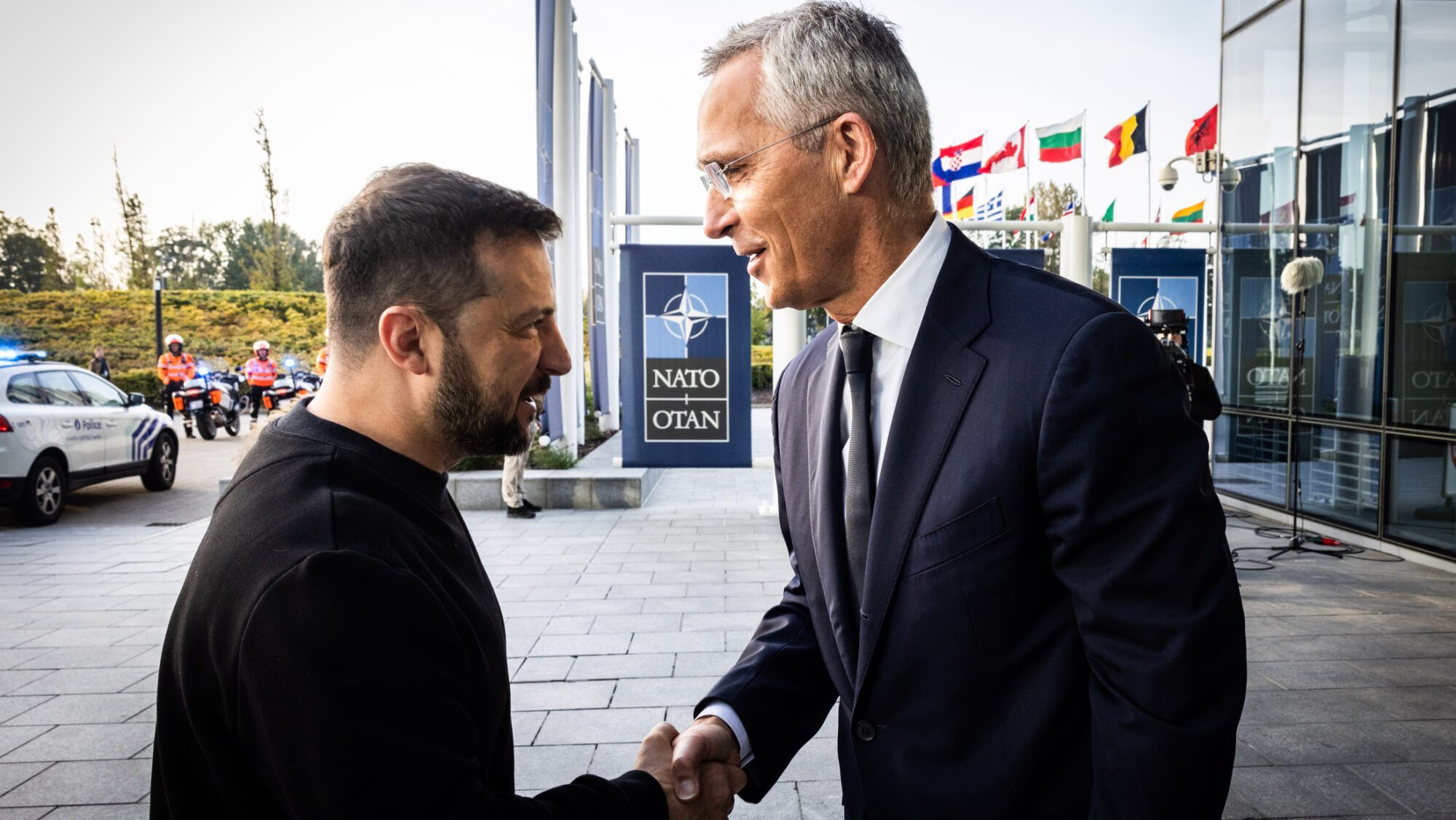Kyiv is in a bind. With the West’s attention turned to its key Middle Eastern ally Israel, Ukraine fears that military aid might be similarly diverted.
On Wednesday, October 11th, NATO defense ministers met at its Brussels headquarters to assure Ukrainian President Volodymyr Zelensky that aid to his war-torn nation would not suffer.
The Ukrainian head of state attended the surprise NATO gathering in person—his first visit to its headquarters since the start of Russia’s invasion—and reiterated a now familiar wishlist.
While Ukraine’s counteroffensive has failed to achieve a breakthrough in Russia’s three-layered defensive line, its troops require more ammunition and artillery to remain an effective fighting force in what has become a grueling war of attrition.
In addition, air defense systems are urgently needed to help defend Ukraine’s vulnerable energy grid, a prime target of Russia’s during what is expected to be a harsh winter.
Before the start of the meeting, NATO chief Jens Stoltenberg tried to assuage Zelensky’s concerns, saying, “Your fight is our fight. Your security is our security, and your values are our values,” and adding that the military alliance would “stand by Ukraine for as long as it takes.”
At a press conference following the meeting, Stoltenberg said NATO has “the capability and the strength to address different challenges at the same time,” and that it does not have the “luxury of choosing only one threat and one challenge.”
U.S. Defense Secretary Lloyd Austin, whose government had already begun sending military aid to Israel, including interceptors for the depleted stock of its Iron Dome missile defense system, made similar assurances.
At the meeting, he told reporters:
In terms of our ability to continue to support both the efforts in Ukraine and support the efforts in Israel as well, absolutely, we can do both and we will do both.
Across party lines and among the U.S. citizenry, aid to Ukraine has become a hot-button issue, stoking fears in NATO and Kyiv that a new administration following next year’s elections might upend the Biden administration’s current policy.
Since Russia’s invasion in 2022, over $46 billion in military aid, including dozens of tanks, thousands of rockets, and millions of rounds of ammunition has flowed into the country from the U.S.
Nevertheless, Austin announced at the event that Ukraine’s most important ally is sending another $200 million in air defense, artillery, and rocket ammunition.
Other NATO members made pledges of their own.
From Canada, Ukraine will receive tens of millions of dollars worth of winter clothing and equipment, while Germany announced a €1 billion “winter package,” which would include Patriot and IRIS-T air defense systems. Meanwhile, the UK has promised over €100 million in air defense and mine clearance equipment.
After attending a meeting of the U.S.-led Ukraine Defense Contact Group, comprising some 50 nations in support of Kyiv, Zelensky welcomed the assurances and new pledges but appeared skeptical as to whether this largesse would continue in the long term.
Speaking to reporters, he queried: “My question was … will your [the West’s] support be less than now? The partners say ‘no.’ But who knows how it will be? I think nobody knows.”
Another wish of Kyiv’s, i.e., the delivery of more modern Western fighter jets, to grant it much-needed air support, however, came closer to being realized.
A separate statement by the Danish ministry of defense said that Denmark, the Netherlands, and the U.S. will spearhead a new international coalition to help Ukraine establish a future air force based on F-16 fighter jets.
This new coalition would direct its efforts toward building infrastructure around F-16s, including maintenance facilities to support the operation of the planes.
Denmark and the Netherlands were the first NATO members to pledge F-16 jets to Ukraine.
Having looked into its logistics, Belgium has also greenlit the delivery of an as-yet-unknown number of F-16 jets, albeit for training purposes only. The amount would depend on how soon its replacement, the U.S.-made F-35s, can be delivered.
Following a meeting with President Zelensky, who had just come from NATO headquarters, Belgian Prime Minister Alexander De Croo confirmed the news at a press conference.
While deliveries could happen as soon as 2025 (deemed by some in the Belgian commentariat as ‘too little, too late’), the final decision would rest with whomever constitutes the government at that time, since that is “how a democracy works,” De Croo added.
Zelensky was unhappy with that caveat, the implications of which he labeled as “dangerous.”
“It is a long war,” he said, and “everyone fears that something else might happen. For example, should another war break out,”—a clear reference to the risk of the Israel-Hamas conflict becoming a wider regional war—“what will happen to our military support?”
Tomorrow, the second day of the NATO meeting, the issue of Israel is to be debated, joined by Israeli Defense Minister Yoav Galan via video link.






